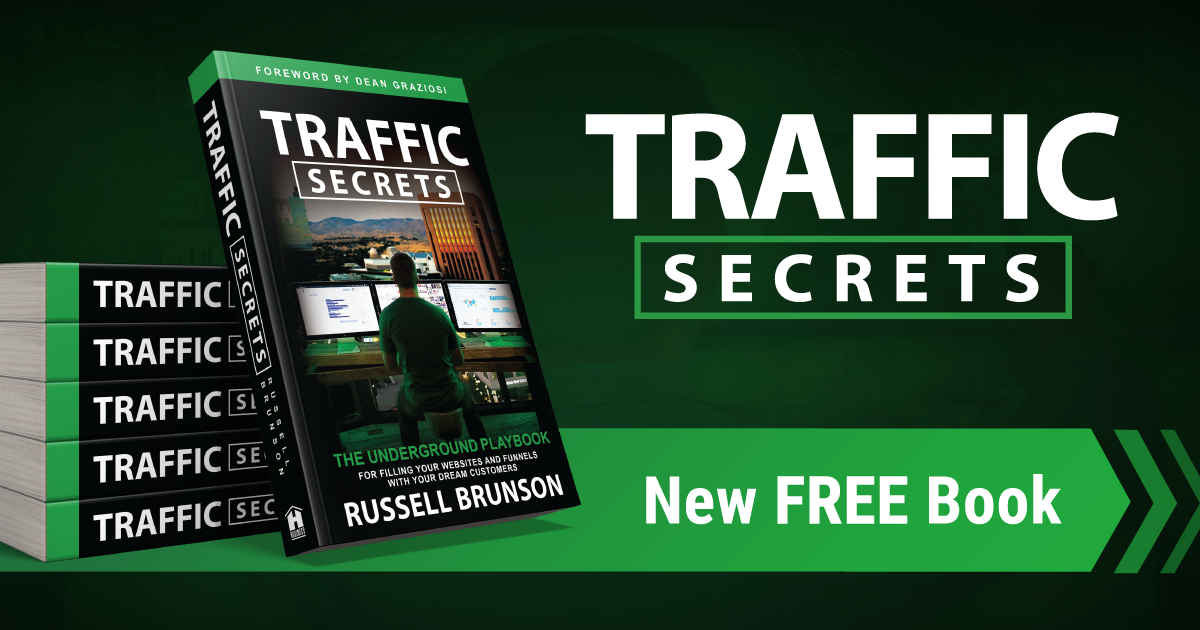Archive
Embarking on the Journey of Online Marketing: Essential Tips and Tricks
Hey there, fellow online marketing enthusiasts! Today, I want to share with you some essential tips and tricks that I’ve learned while embarking on the journey of online marketing. It’s an exciting and ever-evolving field, so let’s dive right in!
Setting Clear Goals
When I first started my online marketing journey, I quickly realized the importance of setting clear goals. It’s essential to have a roadmap of where you want to go and what you want to achieve. Whether it’s increasing website traffic, boosting conversions, or improving brand awareness, defining your goals will help you stay focused and measure your success.

Know Your Target Audience
Understanding your target audience is crucial in online marketing. Take the time to research and analyze who your ideal customers are. What are their demographics, interests, and pain points? By understanding your audience, you can tailor your marketing efforts to resonate with them and provide value.
Create Quality Content
Content is king in the world of online marketing. Whether it’s blog posts, videos, podcasts, or social media updates, creating quality content is essential to attract and engage your target audience. Aim to provide valuable and relevant information that solves problems or answers questions for your audience. Don’t forget to optimize your content with relevant keywords to improve your search engine rankings.
Utilize Social Media
Social media platforms are powerful tools for online marketing. They provide an opportunity to connect with your audience, build brand awareness, and drive traffic to your website. Choose the platforms that align with your target audience and create engaging content that encourages interaction. Don’t forget to leverage social media analytics to measure the effectiveness of your campaigns and make data-driven decisions.
Optimize for Search Engines
Search engine optimization (SEO) plays a significant role in online marketing. Optimizing your website with relevant keywords, improving load times, and ensuring mobile-friendliness are just a few SEO tactics that can boost your website’s visibility in search engine results. Stay up to date with the latest SEO practices and algorithms to ensure your website remains competitive.
Monitor and Analyze
Monitoring and analyzing your online marketing efforts is vital to understand what’s working and what’s not. Utilize tools like Google Analytics to track your website’s performance, measure conversions, and gain insights into user behavior. By regularly reviewing your data, you can make informed decisions and optimize your strategies for better results.
Stay Updated and Adapt
Finally, online marketing is a field that is constantly evolving. Stay updated with the latest trends, technologies, and best practices. Attend webinars, read industry blogs, and participate in online communities to stay ahead. Be willing to adapt your strategies to meet the changing needs of your target audience and the digital landscape.
Embarking on the journey of online marketing can be overwhelming, but by implementing these essential tips and tricks, you’ll be well on your way to success. Remember to set clear goals, understand your audience, create quality content, utilize social media, optimize for search engines, monitor and analyze your efforts, and stay updated. Good luck, and enjoy the adventure!
This post may contain affiliate links, where I may receive a small commission if you purchase something through following the link at no cost to you.
Building Effective Sales Funnels: A Comprehensive Guide
Hey there! Are you struggling to make sales? Do you feel like you’re putting in a lot of effort but not seeing the results you want? You’re not alone. Many businesses struggle with this issue, but the good news is that there is a solution: building an effective sales funnel.
A sales funnel is a series of steps that a potential customer goes through before making a purchase. It’s important to note that not everyone who enters your sales funnel will end up making a purchase, but the goal is to increase the number of people who do. Here’s how to build an effective sales funnel:
Step 1: Identify your target audience
The first step in building an effective sales funnel is to identify your target audience. Who are the people who are most likely to be interested in your product or service? What are their pain points, and how can your product or service help solve them?

Step 2: Create a lead magnet
A lead magnet is something that you offer for free in exchange for someone’s contact information. This could be a free e-book, a webinar, or even a free trial of your product or service. The goal is to provide something of value that will entice people to give you their contact information.
Step 3: Create a landing page
A landing page is a page on your website that is specifically designed to capture leads. It should be simple, with a clear call-to-action (CTA) that tells people what they will get in exchange for their contact information.
Step 4: Set up an email sequence
Once someone has given you their contact information, you can start sending them emails. The goal of these emails is to build a relationship with your potential customer and to provide them with value. This could be through educational content, case studies, or even just helpful tips and advice.
Step 5: Make an offer
Once you have built a relationship with your potential customer, it’s time to make an offer. This could be a discount on your product or service, a free trial, or even just an invitation to schedule a consultation with you.
Step 6: Follow up
Not everyone will make a purchase after your initial offer, but that doesn’t mean they’re not interested. It’s important to follow up with these potential customers and continue building the relationship. This could be through additional emails, retargeting ads, or even just a personal phone call.
Building an effective sales funnel takes time and effort, but it’s worth it in the end. By following these steps, you can increase your chances of making more sales and growing your business.
This post may contain affiliate links, where I may receive a small commission if you purchase something through following the link at no cost to you.
Creating a High-Converting Sales Funnel: Tips and Tricks
Creating a high-converting sales funnel is essential for any business that wants to succeed. It’s not enough to have a great product or service; you need to be able to sell it effectively. In this post, I’ll be sharing some tips and tricks on how to create a sales funnel that converts.
First of all, it’s important to understand what a sales funnel is. A sales funnel is a series of steps that a potential customer goes through before they make a purchase. It starts with awareness of your brand or product, then moves on to interest, consideration, and finally, the purchase stage.
The first step in creating a high-converting sales funnel is to identify your target audience. You need to know who you’re selling to in order to create a funnel that will resonate with them. Once you’ve identified your target audience, you can start creating content that will attract them.

The next step is to create a landing page that is specifically designed to convert visitors into leads. Your landing page should have a clear and compelling headline, a strong call-to-action, and a lead magnet that will entice visitors to provide their email address.
Once you have captured a lead, it’s important to nurture them with targeted email campaigns. Your email campaigns should provide value to your leads and build trust with them over time. You can also segment your email list based on the actions they take on your website, such as downloading a lead magnet or adding a product to their cart.
The final stage of your sales funnel is the purchase stage. Your checkout process should be simple and straightforward, making it easy for customers to complete their purchase. You can also offer upsells and cross-sells to increase the average order value.
In conclusion, creating a high-converting sales funnel takes time and effort, but it’s worth it in the end. By understanding your target audience, creating a compelling landing page, nurturing leads with targeted email campaigns, and optimizing your checkout process, you can create a sales funnel that converts visitors into customers.
This post may contain affiliate links, where I may receive a small commission if you purchase something through following the link at no cost to you.
Lead Generation: How to Build a Top-of-Funnel Strategy
Hey there, fellow marketers! Are you struggling with lead generation? Well, worry no more because I have some tips on how to build a top-of-funnel strategy that will help you generate more leads.
First things first, let’s define what a top-of-funnel strategy is. It’s the beginning of the buyer’s journey, where you attract potential customers and start building brand awareness. So, how do you build a successful top-of-funnel strategy? Here are some steps to follow:
1. Identify your target audience: You need to know who your ideal customer is to be able to attract them. Create buyer personas to understand their needs, pain points, and behavior.

2. Create valuable content: Your content needs to be informative, educational, and engaging. It should answer your audience’s questions and provide them with a solution to their problems. Use different content formats such as blog posts, videos, infographics, and podcasts.
3. Optimize your website: Make sure your website is user-friendly, mobile-responsive, and easy to navigate. Add clear calls-to-action (CTAs) and lead magnets such as eBooks, whitepapers, and free trials to encourage visitors to provide their contact information.
4. Use social media: Social media is a powerful tool to reach a wider audience and promote your content. Use different platforms such as LinkedIn, Twitter, and Facebook to share your content and engage with your audience.
5. Leverage paid advertising: Paid advertising can help you reach your target audience faster and generate more leads. Use platforms such as Google Ads, Facebook Ads, and LinkedIn Ads to promote your content and drive traffic to your website.
6. Measure your results: Track your website traffic, social media engagement, and conversion rates to see what’s working and what’s not. Use analytics tools such as Google Analytics and HubSpot to get insights into your performance.
In conclusion, building a top-of-funnel strategy is crucial for lead generation. By identifying your target audience, creating valuable content, optimizing your website, using social media, leveraging paid advertising, and measuring your results, you can attract more potential customers and start building a relationship with them. Good luck!
This post may contain affiliate links, where I may receive a small commission if you purchase something through following the link at no cost to you.
Segmenting Your Sales Funnel: How to Personalize Your Marketing Efforts
Hey there, fellow marketers!
As we all know, having a sales funnel is essential to any business. It’s the process that leads potential customers towards making a purchase. But did you know that segmenting your sales funnel is just as crucial? By doing so, you can personalize your marketing efforts and increase your conversion rates.
What is Segmenting Your Sales Funnel?

Segmenting your sales funnel means dividing your potential customers into specific groups or segments based on their behavior, interests, preferences, or demographics. By doing this, you can create targeted marketing messages that resonate with each segment, increasing the chances of them moving down the funnel.
Why Should You Segment Your Sales Funnel?
Segmenting your sales funnel has several benefits:
- Personalization: By targeting specific segments, you can create personalized marketing messages that speak directly to them, increasing the chances of them engaging with your brand.
- Higher conversion rates: Personalized marketing messages lead to higher conversion rates because they resonate better with potential customers.
- Cost-effectiveness: By focusing your marketing efforts on specific segments, you can save money on advertising and other marketing expenses.
- Better customer relationships: By delivering personalized messages, you can build stronger relationships with your customers, increasing their loyalty to your brand.
How to Segment Your Sales Funnel?
Segmenting your sales funnel involves several steps:
- Define your target audience: Identify the characteristics of your ideal customer, such as age, gender, location, interests, and behavior.
- Create buyer personas: Develop buyer personas for each segment based on their characteristics. This will help you understand their needs, pain points, and motivations.
- Track customer behavior: Use analytics tools to track customer behavior, such as website visits, email opens, and social media engagement. This will help you identify which segments are most engaged with your brand.
- Create targeted marketing messages: Create marketing messages that speak directly to each segment. This could include personalized emails, targeted social media ads, or customized landing pages.
- Test and optimize: Continuously test and optimize your marketing messages to improve their effectiveness.
Conclusion
Segmenting your sales funnel is a powerful way to personalize your marketing efforts and increase your conversion rates. By targeting specific segments with personalized messages, you can build stronger relationships with your customers, save money on advertising, and improve your overall marketing ROI. So, what are you waiting for? Start segmenting your sales funnel today!
This post may contain affiliate links, where I may receive a small commission if you purchase something through following the link at no cost to you.
Online Advertising: How to Use PPC, Display Ads, and Remarketing to Drive Traffic and Sales
Hey guys,
Today, I want to talk about online advertising. As a small business owner, I know how important it is to drive traffic and sales to your website. That’s why I’ve found success in using PPC, display ads, and remarketing to reach my target audience.
PPC (Pay-Per-Click)

PPC is a form of online advertising where you only pay when someone clicks on your ad. This means you’re only paying for the traffic that actually comes to your site. Google AdWords is one of the most popular platforms for PPC advertising.
One of the biggest benefits of PPC is that you can target specific keywords that your audience is searching for. This means you can reach people who are actively looking for your product or service. Plus, because you only pay when someone clicks on your ad, it’s a cost-effective way to advertise.
Display Ads
Display ads are the banner ads that you see on websites. They can be static images or animated graphics. Display ads can be targeted based on demographics, interests, and behaviors.
One of the benefits of display ads is that they can help increase brand awareness. Even if someone doesn’t click on your ad, they may still see your brand and become more familiar with it. Display ads can also be a cost-effective way to advertise, especially if you’re targeting a niche audience.
Remarketing
Remarketing is a form of online advertising where you target people who have already visited your website but didn’t make a purchase. By targeting these people with ads, you can try to bring them back to your site and convert them into customers.
Remarketing can be especially effective because these people have already shown an interest in your product or service. By reminding them of your brand, you can increase the likelihood that they’ll come back to your site and make a purchase.
Conclusion
Overall, online advertising can be a great way to drive traffic and sales to your website. By using PPC, display ads, and remarketing, you can reach your target audience and increase your chances of converting them into customers. Just remember to always track your results and adjust your strategy as needed.
Thanks for reading!
This post may contain affiliate links, where I may receive a small commission if you purchase something through following the link at no cost to you.
Content Marketing: How to Create Valuable Content That Drives Traffic and Sales
Hey there! As a content marketer, I know how important it is to create valuable content that not only drives traffic but also generates sales. In this blog post, I’ll be sharing some tips on how to create content that is valuable and effective in reaching your target audience.
Know Your Audience
The first thing you need to do is understand your audience. Who are they? What are their pain points? What solutions are they looking for? The more you know about your audience, the easier it will be to create content that resonates with them.
Create a Content Strategy
Once you have a clear understanding of your audience, it’s time to develop a content strategy. This should include the types of content you will create, the frequency of your content, and the channels you will use to distribute your content.
Your content should be a mix of educational and promotional content. Educational content should provide value to your audience and help solve their problems. Promotional content should focus on your products or services and how they can help your audience.

Use Visuals
Visuals are a great way to make your content more engaging. Use images, videos, and infographics to help break up the text and make your content more interesting to read.
Optimize Your Content for Search Engines
Search engine optimization (SEO) is important for driving traffic to your website. Make sure your content is optimized for the keywords your audience is searching for. Use relevant keywords in your titles, headings, and throughout your content.
Promote Your Content
Creating great content is only half the battle. You also need to promote your content to reach your target audience. Share your content on social media, email newsletters, and other relevant channels. You can also reach out to influencers in your industry and ask them to share your content with their followers.
Analyze Your Results
Finally, it’s important to analyze your results to see what’s working and what’s not. Use analytics tools to track your website traffic, engagement, and conversion rates. Use this data to make informed decisions about your content strategy moving forward.
By following these tips, you can create valuable content that drives traffic and sales for your business. Remember to always put your audience first and provide them with the solutions they are looking for.
This post may contain affiliate links, where I may receive a small commission if you purchase something through following the link at no cost to you.
